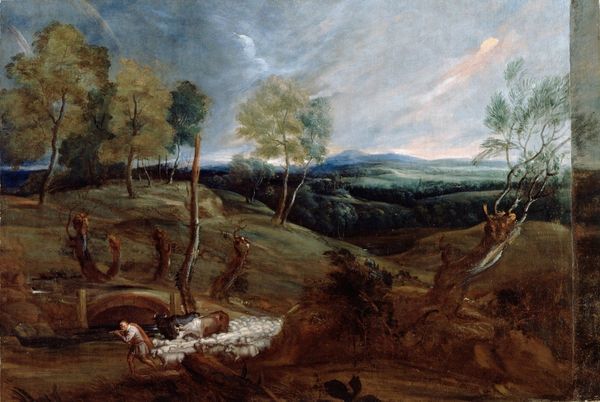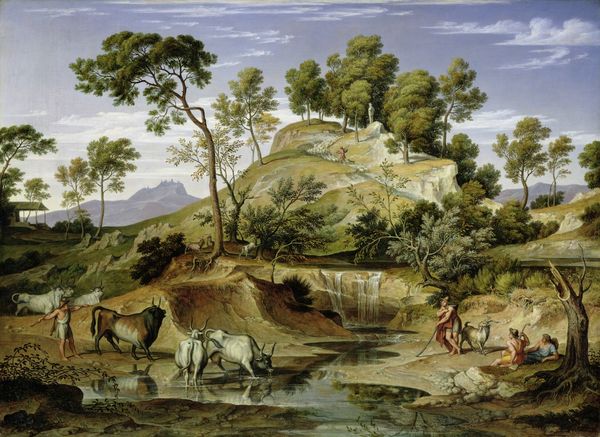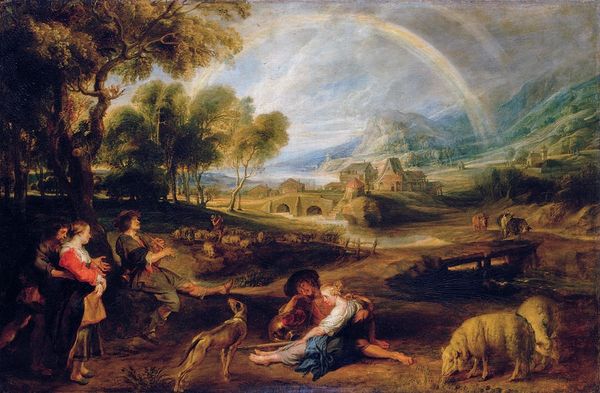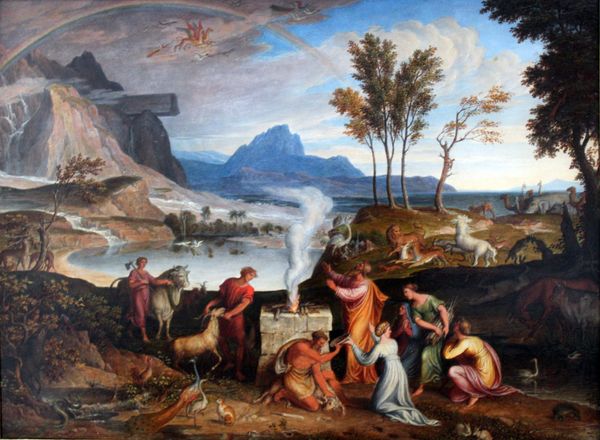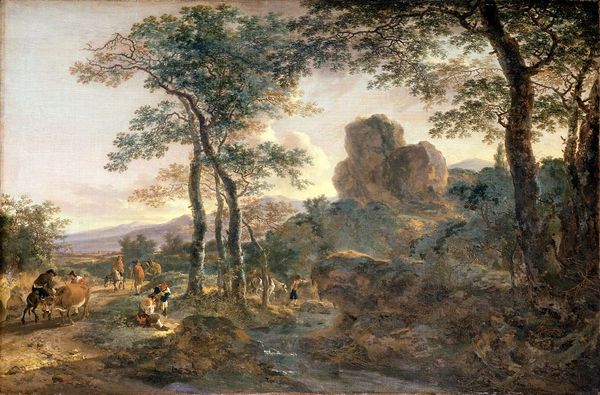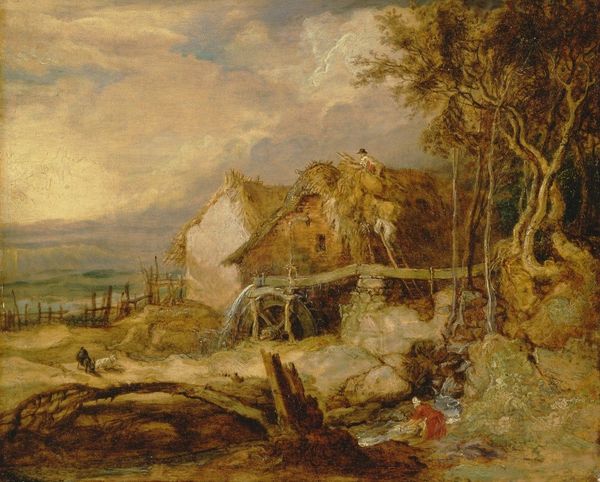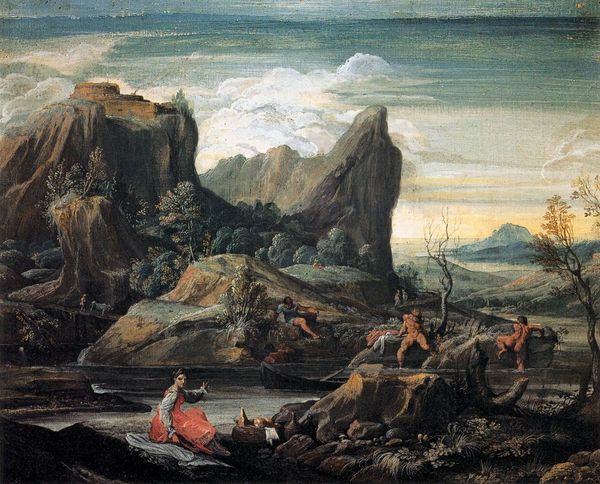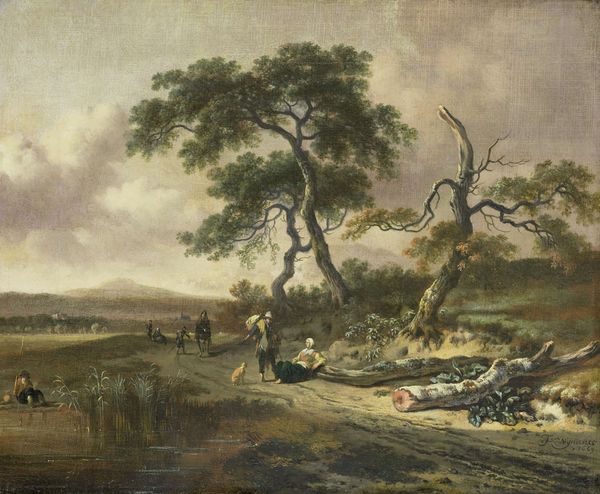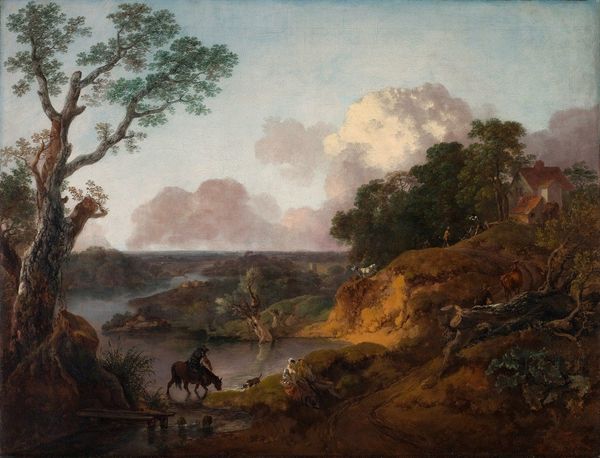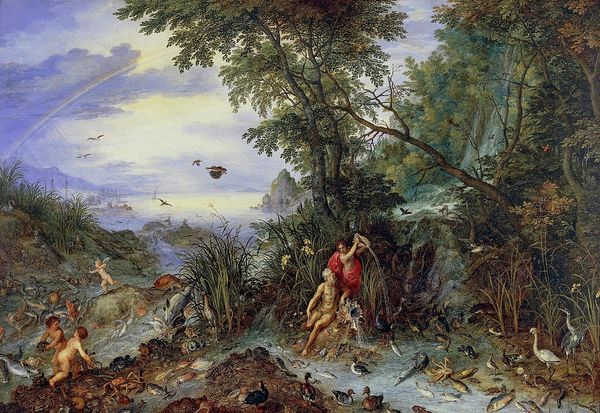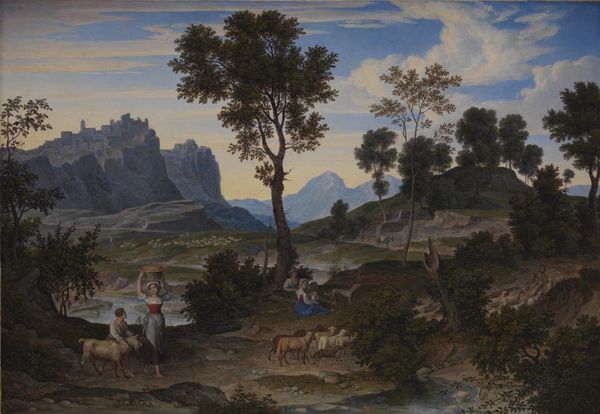
Landschaft Nach Einem Gewitter 1830
0:00
0:00
josephantonkoch
Staatsgalerie Stuttgart, Stuttgart, Germany
oil-paint
#
tree
#
oil-paint
#
landscape
#
figuration
#
oil painting
#
romanticism
#
history-painting
Dimensions: 103 x 76 cm
Copyright: Public domain
Editor: Here we have Joseph Anton Koch’s 1830 oil painting, "Landschaft Nach Einem Gewitter," or "Landscape After a Thunderstorm". I’m immediately struck by how the artist juxtaposes the residual darkness of the storm clouds with the vibrant rainbow in the background. It feels incredibly staged; almost like a theater backdrop. What formal elements stand out to you in this work? Curator: Precisely, its pictorial construction demands attention. Note how Koch has rigorously structured the canvas using a tripartite division. The foreground presents a dark, earthy tonality, immediately grounding the viewer. A transitional middle ground, defined by pastoral activity, mediates between the immediate and the expansive. Lastly, the background ascends toward a lighter, ethereal realm, culminating in the dramatic sky. Does the arrangement of the landscape, segmented into distinct horizontal zones, not suggest an allegorical progression, perhaps even a symbolic representation of earthly and divine realms? Editor: I hadn’t considered that. It almost feels as though each zone is competing for my attention. Curator: Exactly! And it is in that visual friction that Koch establishes the painting’s dynamic tension. Examine the meticulous detailing of the figures. See how their placement and scale within the composition subtly guide the viewer’s eye, leading it deeper into the canvas, navigating those horizontal strata? Note also how the painterly technique differs. Observe the impasto in the foreground trees versus the glazing in the distant mountains. What do these disparities communicate about Koch's artistic intention? Editor: I see. So it’s the relationships between color, form, and texture that generate meaning here, rather than any symbolic reading of the rainbow, or the figures? Curator: Precisely. It is the intrinsic relationships, the visual orchestration of elements, which yield the painting's potency. Now, doesn't focusing on these artistic methods deepen our understanding of Koch's aesthetic project, enabling a more rigorous engagement with the artwork itself? Editor: I agree, shifting the focus to Koch's artistic choices and how they structure the overall composition makes me appreciate the work so much more. Thank you!
Comments
No comments
Be the first to comment and join the conversation on the ultimate creative platform.

